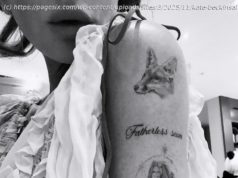Brooke Palmer/Warner Bros. In order to understand how clowns got creepy, first you have to understand how clowns got happy. As long as there…
Brooke Palmer/Warner Bros.
In order to understand how clowns got creepy, first you have to understand how clowns got happy.
As long as there have been people, there have been clowns, who sometimes go by different names: trickster, fool, buffoon, joker, freak. History’s clowns are ambiguous, complicated, often subversive figures. They can speak truth to power, say things no one else can, like a jester. They can be poetic and mischievous, like Charlie Chaplin. They can be sad, like Emmett Kelly’s Weary Willie, one of the stars of Ringling Brothers in the ’40s and ’50s who was modeled on Depression-era hobos and wore rags and had a sooty beard. Clowns can be romantic, ironic, depressed, cruel, sweet, dopey, or devilish, and they use different kinds of comedy, from slapstick to satire, to riff on the human condition through humor.
There are clowns in almost every culture in the world, but the modern American birthday clown traces its lineage and look to 16 th -century Italian commedia dell’arte, an improvised, popular form of theater that relied on stock character types the audience would already be familiar with. Some of these stock characters, like the Pierrot and the Harlequin, had costumes that clearly influenced modern clowns. But the perpetually cheerful birthday clown of today would not be recognizable to people in the 16 th century. For one thing, birthday clowns are way, way too happy.
The perpetually cheerful birthday clown of today would not be recognizable to people in the 16th century.
Jose Cabezas /Reuters
According to Linda Simon, a professor emerita at Skidmore and the author of The Greatest Shows on Earth: A History of the Circus, «The idea of clowns as happy is not really historically true.… There was always a clown that was going to be kind of beaten up by the world. And then there was the clown that was going to do the beating.»
Well into the 20 th century, clowns weren’t evil or terrifying, but they weren’t simply good or happy either. And then two things happened that would change public perception of the clown.
The first was the circus. The modern circus was created in the 1770s by the equestrian Philip Astley. (That’s why the circus ring is a circle, so horses could keep running without having to stop.) To increase his audience, Astley filled out his horse shows with other acts: tumblers, jugglers, tight-rope walkers, and clowns. But early circus clowns, like early circuses, were for adults.
It was only starting in the late 19 th century, in America, that circus owners realized kids were an untapped revenue stream. «Circuses that would travel around realized that it was very attractive to children,» Simon says. «They started marketing it as family entertainment, because it would bring in much more money if you could have a whole family come to the circus instead of just an adult male or a couple.» By the mid-20 th century, freak shows had dipped in popularity, and the ideal circus had been almost entirely made-over as a kid’s entertainment.
Clowns became even more closely associated with kids and happiness thanks to the second thing that fundamentally altered the American perspective on the clown: television.
Bozo the Clown started appearing on local television in Los Angeles in 1949. In the late ’50s, he was franchised, which meant that local TV stations around the country each had their own shows starring their own versions of Bozo, making the clown both extremely popular and omnipresent.
In the early 1960s, Washington-area McDonald’s saw sales spike 30% after a local franchise sponsored the TV show Bozo’s Circus. In 1963, that franchise hired the guy who had played Bozo — who happened to be Willard Scott, the future Today show weatherman — to appear on some local TV stations as a new character, Ronald McDonald.
By the 1990s, Ronald McDonald was recognizable to 96% of American children.
Mike Fuentes/Getty Images
In 1966, Ronald McDonald — with his red hair, yellow-and-red jumpsuit, and starry eyes — went national, in the first national ad campaign for a fast-food chain. He was so successful that by the 1990s, Ronald McDonald was recognizable to 96% of American children, bested only by Santa Claus.
These clowns of the TV age had more reach and influence than clowns had ever had before, and they came to overshadow clowns performing in more classic venues, like the circus. But TV clowns weren’t only clowns: They were salesmen, mascots, brand leaders. By the ’60s, the clowns Americans were most familiar with were contractually, obligatorily sunny. They had to be inoffensive, and cheerful, and happy all the time.
All the more complicated aspects of their persona had been suppressed: In other words, conditions were ripe for a backlash.
The rest of the story is available on Episode 3 of Decoder Ring.






